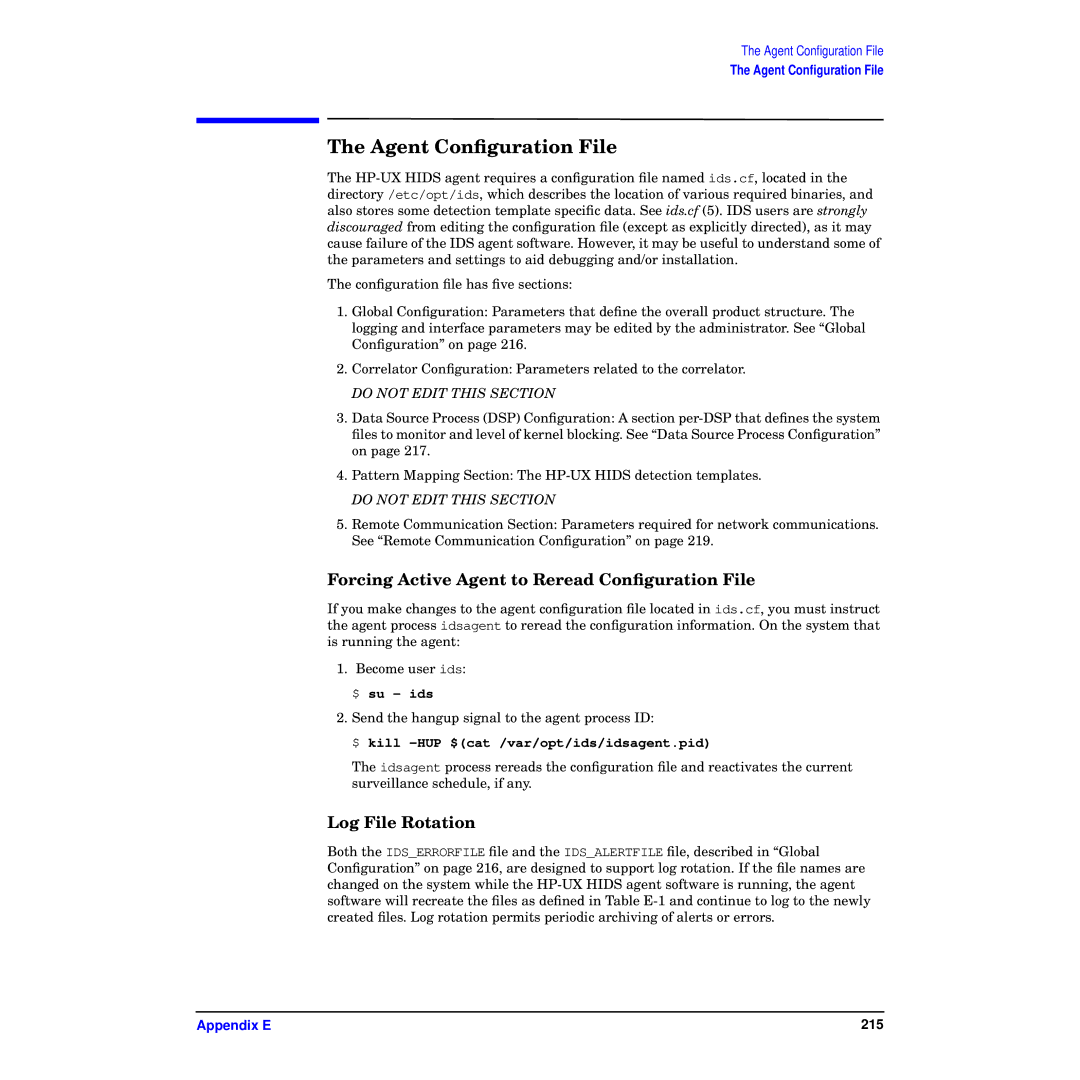
The Agent Configuration File
The Agent Configuration File
The Agent Configuration File
The
The configuration file has five sections:
1.Global Configuration: Parameters that define the overall product structure. The logging and interface parameters may be edited by the administrator. See “Global Configuration” on page 216.
2.Correlator Configuration: Parameters related to the correlator.
DO NOT EDIT THIS SECTION
3.Data Source Process (DSP) Configuration: A section
4.Pattern Mapping Section: The
DO NOT EDIT THIS SECTION
5.Remote Communication Section: Parameters required for network communications. See “Remote Communication Configuration” on page 219.
Forcing Active Agent to Reread Configuration File
If you make changes to the agent configuration file located in ids.cf, you must instruct the agent process idsagent to reread the configuration information. On the system that is running the agent:
1. Become user ids:
$ su - ids
2.Send the hangup signal to the agent process ID:
$ kill -HUP $(cat /var/opt/ids/idsagent.pid)
The idsagent process rereads the configuration file and reactivates the current surveillance schedule, if any.
Log File Rotation
Both the IDS_ERRORFILE file and the IDS_ALERTFILE file, described in “Global Configuration” on page 216, are designed to support log rotation. If the file names are changed on the system while the
Appendix E | 215 |
